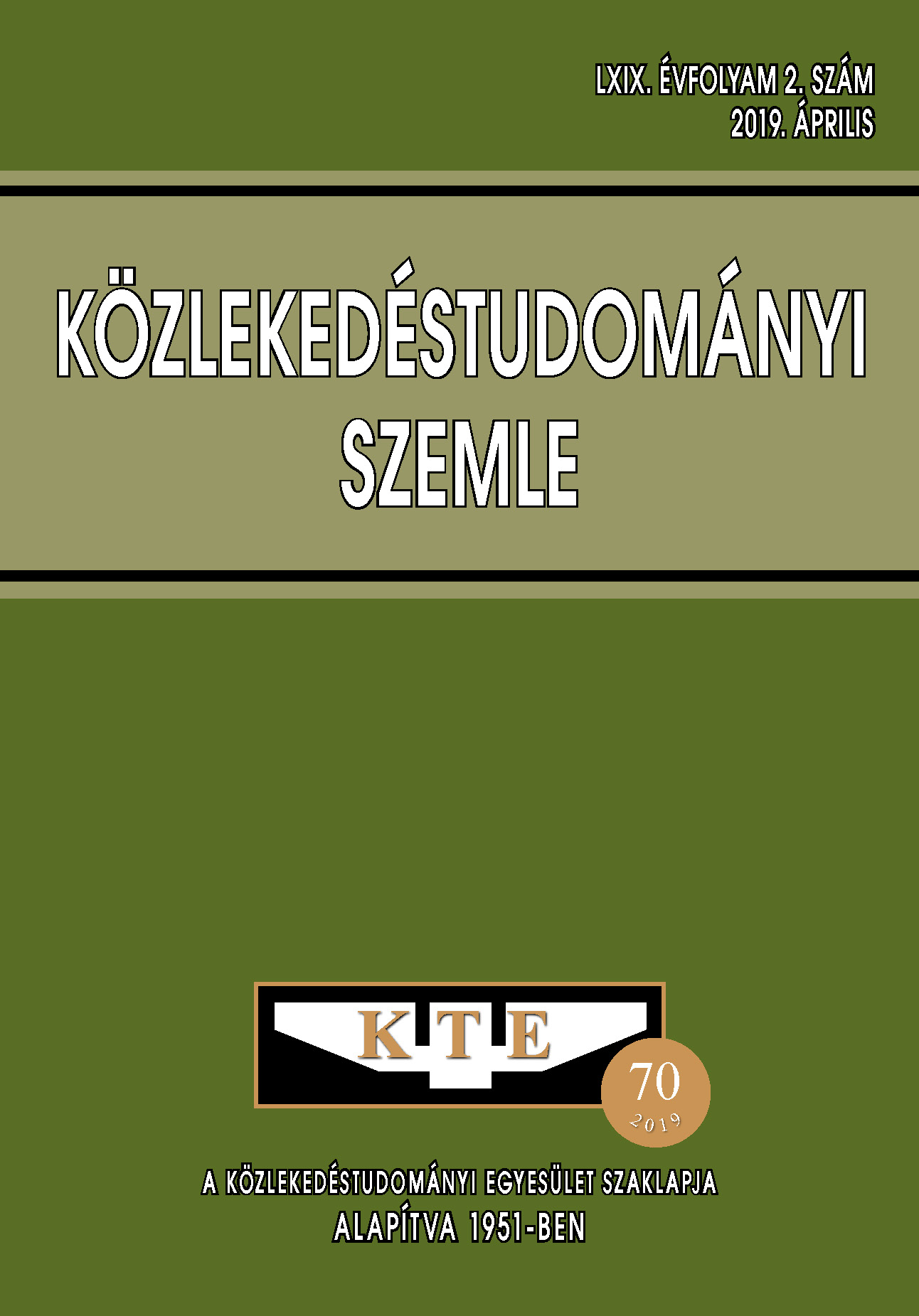Processing of railway track diagnostics data using the program package R
Abstract
The worldwide increase in frequency of traffic for passenger trains and the rise of freight trains over the recent years necessitate the more intense deployment of track monitoring and rail measurement procedures. The wheel-rail contact forces have been a significant factor contributing to the deterioration of the railway track system. Ground vibration and noise are generated either by static axle loads moving along the track or by the dynamic forces arising from wheel and track irregularities. In this paper a track record, obtained by a track recording coach under real railway traffic operations, was utilized. The statistical data processing of the vertical displacement signal using both parametric (in the time-domain) and nonparametric (in the frequency-domain) methods was demonstrated, including some up-to-date techniques as well. For our investigations, the program package R was applied. We have found that the adaptive, sine multitaper spectral density estimates possess more accurate and reliable outcomes than the traditional estimators have been widely used so far.
In the future, it may be proposed the measurements to be extended to longer (500 – 1000 m) track records.
References
Sheng X., Jones C.J.C., Thompson D.J. (2004) A theoretical model for ground vibration from trains generated by vertical track irregularities, Journal of Sound and Vibration, 272(3-5):937-965.DOI: http://doi.org/fvh37k
Thompson D.J. (2009) Railway noise and vibration – Mechanisms, modelling and means of control, Elsevier, p. 518.
Kaewunruen S., Remennikov A. (2008) Dynamic properties of railway track and its components: a state-of-art review, Research Online, Faculty of Engineering, University of Wollogong, Australia, p. 35.
Sun W., Zhou J., Gong D., You T. (2016) Analysis of modal frequency optimization of railway vehicle car body, Advances in Mechanical Engineering, 8(4):1-12. DOI: http://doi.org/f8nc3r
Carlbom P. (2000) Carbody and passengers in rail vehicle dynamics, PhD Thesis, Royal Institute of Technology, Department of Vehicle Engineering, Stockholm, p. 107.
Erhard F., Wolter K.U., Zacher M. (2009) Improvement of track maintenance by continuous track monitoring with regularly scheduled high speed trains, Railway Engineering, 10th International Conference, 24-25 June, London.
Nielsen J., Berggren E., Lölgen T., Müller R., Stallaert B., Pesqueux L. (2013) Overview of methods for measurement of track irregularities important for ground-borne vibration, UIC Collaborative Project Report,
RIVAS_CHALMERS_WP2_D2_5, p. 49.
Newey W.K., West K.D. (1987) A simple, positive semi-definite, heteroskedasticity and autocorrelation consistent covariance matrix, Econometrica, 55(3):703-708., https://www.jstor.org/stable/1913610,
Zobory I. (1994) Sztochasztikus folyamatok, Tanulmánykötet, Budapesti Műszaki Egyetem, Járműgépészeti Intézet, Budapest, p. 128.
Slepian D. (1961) Prolate spheroidal wave functions, Fourier analysis and uncertainty, Bell System Technical Journal, Volume 40, pp. 43-64. DOI: http://doi.org/gc93jw
Welch P. (1967) The use of fast Fourier transform for the estimation of power spectra: a method based on time averaging over short, modified periodograms, IEEE Transactions on Audio and Electroacoustics, 15(2):70-73. DOI: http://doi.org/fjndmb
Thomson D.J. (1982) Spectrum estimation and harmonic analysis. In: Proceedings of the IEEE, Volume 70, Bell Laboratories, pp. 1055-1096.
Riedel K., Sidorenko A. (1995) Minimum bias multiple taper spectral estimation, IEEE Transactions on Signal Processing, 43(1):188-195. DOI: http://doi.org/c6bt59
Barbour A.J., Parker R.L. (2014) Adaptive sine multitaper power spectral density estimation for R, Computers and Geosciences, 63():1-8. DOI: http://doi.org/f5qjxb
Percival D., Walden A. (1993) Spectral Analysis for Physical Applications, Cambridge University Press.
Barbour A.J., Parker R.L., Myer, D. (2016) Package ‘psd’ - CRAN.R-project.org, p. 50.
Articles published electronically are open access (OJS), freely available online and can be downloaded. Authors of articles are not charged any publication or publishing costs (APC). Users have the right to read, download, copy, print, and search the articles, or share the full text with a link.
Authors must declare that their submission has not been previously published in another journal, that financial support has been acknowledged, and that the list of references is complete and accurate, including specification of URLs and DOIs (if available). When submitting a draft article, each author approves the submitted version. Authors guarantee that the article is their original work. Authors are required to participate in the peer review process, follow the advice of reviewers, meet the prescribed deadlines, and, if any, withdraw the submission or correct errors.
All submitted articles are subject to peer review, where the editors request an independent evaluation from at least one expert, ensuring that the reviewer(s) have no conflicts of interest with the authors. The final decision is made by the Editor-in-Chief, who takes into account the evaluations and the suggestions of the editors. The editors and reviewers treat the submission confidentially.
The publisher and editors are committed to maintaining high ethical standards and to preventing publications that involve research misconduct. They follow the COPE guidelines on such ethical issues.
The authors retain copyright and grant the journal the right of first publication under the Creative Commons License (https://creativecommons.org/licenses/by-nc-nd/4.0), which allows others to share the work, while acknowledging the authorship of the work and the first publication in the journal.
The journal archives all published articles, and the journal's owner, the Hungarian Society of Transportation Sciences, will continue to operate the database even if the journal ceases to be published.















